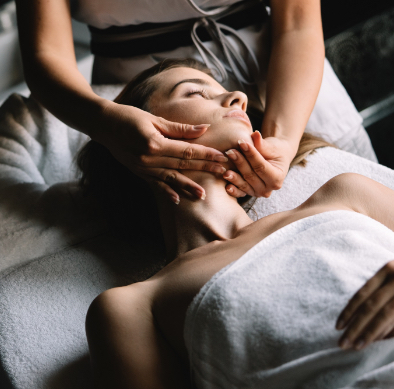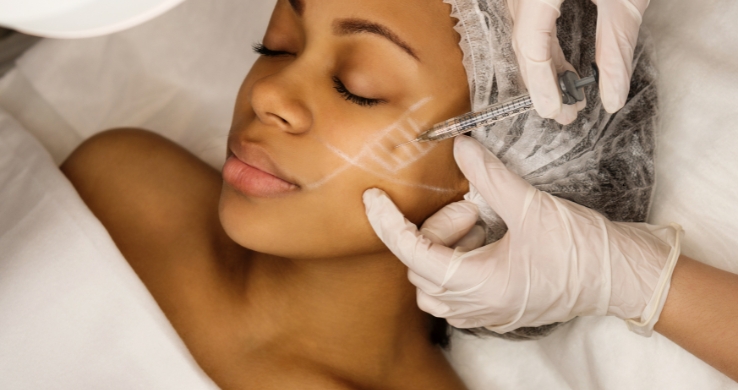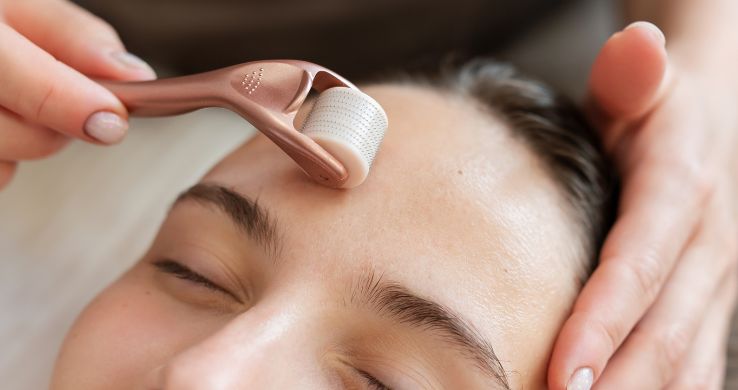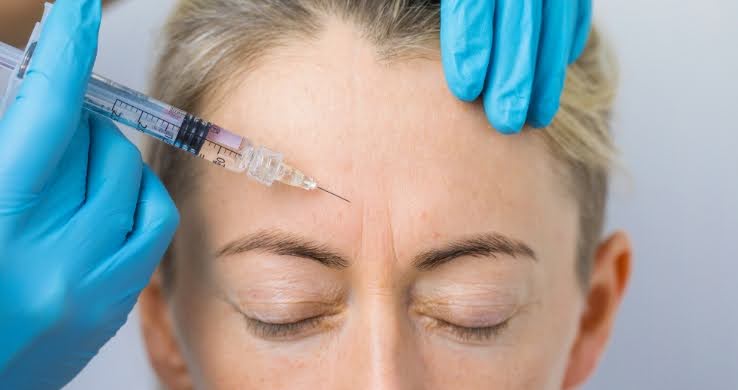Lip fillers have gained significant popularity in recent years, with many individuals seeking to enhance the appearance of their lips. One common question that arises is: how long do lip fillers last? While we would be discussing the significant details in the subsequent paragraphs, a general answer to this question would be 6 to 18 months.
The longevity of lip fillers can vary depending on several factors, including the type of filler used and individual variations in metabolism. Generally, hyaluronic acid-based fillers are commonly used and tend to last between six to twelve months. However, some patients may experience longer-lasting results or require touch-up treatments earlier.
It is crucial to note that while lip fillers provide temporary enhancements, they do not offer a permanent solution. Over time, the body naturally metabolizes hyaluronic acid-based filler, causing the effects to gradually diminish. Therefore, individuals seeking long-term results may need to undergo multiple treatments or consider alternative cosmetic options.
In this article, we will explore various aspects related to lip fillers’ longevity and discuss procedural details, benefits, doubts surrounding this popular cosmetic procedure.
Key Takeaways
- Lip fillers typically last between 6-18 months but can vary depending on the type of filler and individual metabolism.
- Lip fillers are temporary and do not offer a permanent solution, as the body naturally metabolizes the filler material over time.
- There are two main categories of lip fillers: injections-based and surgical-based, with injections-based fillers being the most common and lasting anywhere from 6 to 18 months.
- The longevity of lip fillers depends on the specific types of filler used and individual metabolism.
- After initial lip filler treatment, it is common to do a touch up 2 weeks later, 6 months later or 1 year later.
How long does it take for Lip Fillers to settle
Lip fillers typically take about two weeks to fully settle and to show their results. Right after filler treatment, the lips may bruise, swell, and tender to touch. These side effects should improve and subside by two weeks.
The longevity of lip fillers varies depending on factors such as the type of filler used and individual metabolism, but they generally last between six months to a year before needing touch-ups.
Overall Timeline
On average, the effects of lip fillers can be expected to last for several months before gradually fading away. The overall timeline of lip filler results depends on various factors, such as the type and brand of filler used, individual metabolism, and lifestyle habits.
Immediately after the procedure, there may be some swelling and bruising, which typically subsides within a few days. It usually takes about 1 to 2 weeks for the fillers to fully settle into their final position. At this stage, patients can expect to see the desired plumpness and enhancement in their lips.
Over time, however, the body naturally metabolizes the filler material, causing a gradual decrease in volume. Touch-up treatments are required every 6 to 12 months to maintain the desired results.
Types of Fillers
This discussion will explore the types of fillers used in lip augmentation procedures.
There are two main categories of fillers: injections-based and surgical-based.
Injections-based fillers, such as hyaluronic acid dermal fillers, are the most common and involve injecting a gel-like substance into the lips to add volume and shape.
Surgical-based fillers, on the other hand, typically involve using fat grafts or implants to enhance lip size and contour.
Injections Based
Injections based on hyaluronic acid, a common filler substance in lip augmentation procedures, have a variable duration of effectiveness depending on factors such as the specific product used and an individual’s metabolism. Generally, hyaluronic acid fillers for lips can last anywhere from six to eighteen months.
This variability is due to differences in the formulation and cross-linking of the fillers, which affects their stability and longevity. Additionally, individual metabolic rates can play a role in how long the filler lasts. Factors such as smoking, sun exposure, and excessive exercise may also contribute to the breakdown of hyaluronic acid fillers more rapidly.
Ultimately, it is important for individuals considering lip fillers to consult with a qualified professional who can assess their unique circumstances and provide appropriate guidance regarding expected duration and maintenance options for optimal results.
Surgical Based
Surgical procedures for lip augmentation involve the use of various techniques and materials, such as lip implants or fat transfer, providing a more permanent solution for individuals seeking enhanced lip volume and shape.
Lip implants are silicone-based devices that are surgically inserted into the lips to add volume and definition. They offer long-lasting results, with some implants designed to last indefinitely.
Fat transfer involves harvesting fat cells from one area of the body, typically through liposuction, and injecting them into the lips. This procedure can also provide lasting results as the injected fat cells integrate into the lips’ natural tissue.
However, it is important to note that surgical-based lip augmentation procedures may carry more risks compared to injections-based methods, including infection, scarring, or implant rejection.
Therefore, individuals considering surgical options should consult with a qualified plastic surgeon to discuss potential risks and benefits before making a decision.
Procedural Details for getting Lip Fillers
There are several important factors to consider before an individual undergoes a lip filler procedure. It is crucial to have a thorough consultation with a trained professional who will assess your suitability for the treatment and discuss your desired outcome.
During the lip filler procedure, a numbing cream or local anesthesia may be applied to minimize discomfort. Your provider would carefully injection filler to appropriate layer of your lips. Following the procedure, it is common to experience swelling and bruising, which typically resolves within a few days. It is essential to follow post-procedure care instructions provided by the practitioner to ensure optimal healing and results.
What you need to know before your Lip Filler Procedure?
When considering a lip filler procedure, it is important to be aware of certain factors beforehand to make an informed decision.
First and foremost, it is crucial to consult with a qualified and experienced medical professional who specializes in cosmetic procedures. They will assess your individual needs and provide you with personalized advice regarding the treatment options available to you.
Additionally, it is essential to have realistic expectations about the outcome of the procedure. Lip fillers can enhance the volume and shape of your lips, but they are not permanent solutions. The effects typically last for around 6-18 months, depending on various factors such as the type of filler used and individual metabolism.
Moreover, it is important to disclose any allergies or medical conditions that may affect the procedure or its outcomes. Finally, understanding the potential risks and side effects associated with lip fillers is crucial before undergoing the procedure.
What to expect during a Lip Filler procedure?
During a lip filler procedure, an individual can anticipate the injection of a hyaluronic acid-based filler into specific areas of the lips to enhance their volume and shape. Prior to the procedure, a numbing cream may be applied to minimize discomfort.
The healthcare professional will then use a fine needle or cannula to inject the filler into predetermined sites on the lips. The process generally takes around 15-30 minutes, depending on the extent of treatment required.
Some individuals may experience mild swelling, bruising, or redness immediately after the procedure, but these side effects typically subside within a few days. It is important for individuals to follow any post-procedure instructions provided by their healthcare provider to ensure optimal results and minimize complications.
What happens after a Lip Filler procedure?
After a lip filler procedure, it is common to experience some swelling, bruising, and tenderness in the treated area. This is a normal reaction to the injections and usually subsides within a few days. It is advisable to avoid touching or applying pressure to the lips immediately after the procedure to minimize any potential complications. Additionally, it is recommended to avoid strenuous activities, excessive sun exposure, and alcohol consumption for at least 24 hours post-treatment.
The results of lip fillers are not immediately apparent as they may take some time to settle. Typically, it takes around two weeks for the full effects of the treatment to be visible.
The longevity of lip fillers varies depending on several factors such as individual metabolism, lifestyle choices, and product used. Generally, lip fillers can last anywhere from six months to eighteen months before requiring touch-up treatments or additional injections. Regular maintenance appointments with a qualified healthcare professional can help ensure optimal results over an extended period.
Benefits of getting Lip Fillers
Lip fillers offer various benefits for individuals seeking to enhance their lip appearance. One significant advantage is the improved lip shape that can be achieved through these procedures. By adding volume and definition to the lips, fillers help create a more aesthetically pleasing contour.
Additionally, lip fillers can provide enhanced lip volume, giving a fuller and plumper look to the lips, which is often desired by those looking for a more youthful appearance.
Moreover, one of the notable advantages of getting lip fillers is that the timeline for the procedure is relatively minimal, allowing individuals to achieve their desired results with minimal downtime.
Improved Lip Shape
Enhancing the natural contours of one’s lips can be achieved using lip fillers.
One of the benefits of getting lip fillers is an improved lip shape. Lip fillers can help to create a more defined and symmetrical appearance, as well as enhance the overall shape of the lips. They can add volume to thin or uneven lips, resulting in a fuller and more balanced look. Ultimately, lip fillers offer individuals a way to achieve their desired lip shape and enhance their facial features.
Youthful Appearance
The use of lip fillers can contribute to a more youthful appearance, giving individuals the impression of smoother skin and enhanced facial contours.
As people age, their lips may lose volume and become thinner, contributing to a less youthful look. Lip fillers, which are typically made of hyaluronic acid or other similar substances, can be injected into the lips to restore lost volume, and create a plumper appearance. This procedure can result in fuller lips that appear more hydrated and defined.
Additionally, lip fillers can also help reduce the appearance of fine lines around the mouth area, further enhancing a more youthful look.
Your doubts about Lip Fillers
This paragraph will discuss two doubts that individuals may have about lip fillers: whether they could be bad for you and if they cause pain.
Lip fillers have been associated with some potential risks and side effects, such as allergic reactions, infections, unevenness, and vascular complications. However, these risks can be minimized by choosing a qualified and experienced medical professional to perform the procedure.
As for pain, while discomfort during the injection is possible, numbing creams or local anesthesia can be used to minimize any discomfort.
Could Lip Fillers be bad for you?
One potential concern regarding lip fillers is their potential negative effects on a person’s health. While lip fillers are generally considered safe when administered by a qualified professional, there are certain risks associated with the procedure.
In some cases, patients may experience allergic reactions to the filler substance, which can lead to swelling, redness, and discomfort. Additionally, improper injection technique or the use of low-quality products can result in lumps, asymmetry, or even damage to blood vessels.
It is important for individuals considering lip fillers to consult with a reputable and experienced practitioner who can assess their suitability for the procedure and discuss the potential risks involved. Routine follow-up appointments and proper aftercare are also essential in minimizing any adverse effects that may arise.
Do Lip Fillers hurt?
Lip fillers can cause discomfort during the injection process, but the level of pain experienced may vary depending on individual sensitivity and the technique used by the practitioner. The sensation typically lasts for a short duration, as local anesthesia is often applied to minimize pain.
However, some individuals may still feel a slight stinging or pressure during the procedure. The use of smaller needles and cannulas has been found to reduce pain compared to larger needles. Additionally, topical anesthetics or ice packs can be utilized to further alleviate any discomfort.
It is important to note that pain tolerance varies among individuals, and what might be painful for one person could be completely tolerable for another. Ultimately, discussing any concerns with a qualified practitioner prior to undergoing lip filler injections is recommended to ensure a comfortable experience.
Healing Process and Outlook
The healing process and outlook after getting lip fillers are important considerations.
One key aspect is the expected recovery time, which can vary depending on individual factors such as the amount of filler injected and personal healing abilities.
It is also crucial to know when it is safe to resume eating after getting lip fillers, as there may be temporary restrictions to minimize swelling and discomfort.
What is the expected Recovery Time?
It typically takes around two weeks for the swelling to completely resolve and for the lips to settle into their final shape.
Generally, most individuals experience some swelling, redness, and tenderness immediately after the procedure. These side effects usually subside within a few days or up to a week. However, it is essential to note that complete recovery may take longer.
During this time, it is advised to avoid strenuous activities and excessive sun exposure. It is also crucial to follow post-treatment instructions provided by the practitioner to ensure optimal healing and minimize any potential complications.
When can you start eating after getting your Lip Fillers?
After receiving lip fillers, it is important to consider when you can resume eating. The recovery time for lip fillers varies from person to person, but generally, patients can eat and drink immediately after the procedure. However, it is recommended to wait until the numbness and swelling subside before consuming hot or hard foods.
It is also advised to avoid any extreme movements of the lips or excessive chewing during the initial days following the treatment. Additionally, it is essential to maintain good oral hygiene by gently brushing your teeth and avoiding any vigorous rinsing or spitting for a few hours after getting lip fillers.
Following these guidelines will help ensure a smooth recovery process and minimize any potential complications that may arise from eating too soon after the procedure.
Conclusion
In conclusion, the duration of lip fillers’ effectiveness varies depending on various factors such as the type of filler used and individual metabolism. Generally, lip fillers can last anywhere from six months to eighteen months
The procedure involves injecting a dermal filler into the lips to enhance their appearance and volume. It is important to consider the risk and benefits of lip fillers, include procedure down time, maintenance, and costs.
While there may be doubts surrounding this cosmetic procedure, understanding the healing process, and maintaining realistic expectations can help achieve satisfactory results.
Frequently Asked Questions
Are lip fillers permanent?
Lip fillers are not permanent. They typically last for a few months to a year, depending on the type of filler used and individual factors. Regular maintenance sessions are required to maintain the desired results.
Are there any risks or side effects associated with lip fillers?
There are potential risks and side effects associated with lip fillers. These may include swelling, bruising, asymmetry, infection, allergic reactions, and the formation of lumps or nodules. It is important to consult a qualified professional for proper assessment and management of these risks.
Can lip fillers be customized to achieve a specific look?
Lip fillers can be customized to achieve a specific look by adjusting the amount and placement of the filler. This allows individuals to enhance their lip shape, size, and symmetry according to their desired outcome.
How often do I need to get lip filler touch-ups?
The frequency of lip filler touch-ups depends on several factors, such as individual metabolism, product used, and desired results. It is recommended to consult with a qualified professional for personalized advice on the appropriate timing for touch-up treatments.
Is there a recommended age for getting lip fillers?
There is no set recommended age for getting lip fillers, as it depends on individual preferences and goals. It is important to consult with a qualified professional who can assess your specific needs and provide appropriate guidance.





